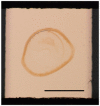Data Processing of SPR Curve Data to Maximize the Extraction of Changes in Electrochemical SPR Measurements
- PMID: 36005010
- PMCID: PMC9406148
- DOI: 10.3390/bios12080615
Data Processing of SPR Curve Data to Maximize the Extraction of Changes in Electrochemical SPR Measurements
Abstract
We developed a novel measuring and data-processing method for performing electrochemical surface plasmon resonance (EC-SPR) on sensor surfaces for which detecting a specific SPR angle is difficult, such as a polymer having a non-uniform thickness with coloration. SPR measurements are used in medicine and basic research as an analytical method capable of molecular detection without labeling. However, SPR is not good for detecting small molecules with small refractive index changes. The proposed EC-SPR, which combines SPR measurements with an electrochemical reaction, makes it possible to measure small molecules without increasing the number of measurement steps. A drawback of EC-SPR is that it is difficult to detect a specific SPR angle on electron mediators, and it was found that it may not be possible to capture all the features produced. The novel method we describe here is different from the conventional one in which a specific SPR angle is obtained from an SPR curve; rather, it processes the SPR curve itself and can efficiently aggregate the feature displacements in the SPR curves that are dispersed through multiple angles. As an application, we used our method to detect small concentrations of H2O2 (LOD 0.7 μM) and glutamate (LOD 5 μM).
Keywords: electrochemical SPR (EC-SPR); glutamate; signal processing; surface plasmon resonance (SPR).
Conflict of interest statement
The authors declare no conflict of interest.
Figures









Similar articles
-
Analysis of Surface Plasmon Resonance Curves with a Novel Sigmoid-Asymmetric Fitting Algorithm.Sensors (Basel). 2015 Sep 30;15(10):25385-98. doi: 10.3390/s151025385. Sensors (Basel). 2015. PMID: 26437414 Free PMC article.
-
Electrochemical surface plasmon resonance: basic formalism and experimental validation.Anal Chem. 2010 Feb 1;82(3):935-41. doi: 10.1021/ac902178f. Anal Chem. 2010. PMID: 20047281
-
An in situ electrochemical surface plasmon resonance immunosensor with polypyrrole propylic acid film: comparison between SPR and electrochemical responses from polymer formation to protein immunosensing.Biosens Bioelectron. 2008 Feb 28;23(7):1055-62. doi: 10.1016/j.bios.2007.10.026. Epub 2007 Nov 6. Biosens Bioelectron. 2008. PMID: 18078745
-
Surface plasmon resonance spectroscopy for characterisation of membrane protein-ligand interactions and its potential for drug discovery.Biochim Biophys Acta. 2014 Jan;1838(1 Pt A):43-55. doi: 10.1016/j.bbamem.2013.04.028. Epub 2013 May 9. Biochim Biophys Acta. 2014. PMID: 23665295 Review.
-
Development of phase detection schemes based on surface plasmon resonance using interferometry.Sensors (Basel). 2014 Aug 28;14(9):15914-38. doi: 10.3390/s140915914. Sensors (Basel). 2014. PMID: 25171117 Free PMC article. Review.
References
-
- Horiuchi T., Tobita T., Miura T., Iwasaki Y., Seyama M., Inoue S., Takahashi J., Haga T., Tamechika E. Floating Chip Mounting System Driven by Repulsive Force of Permanent Magnets for Multiple On-Site SPR Immunoassay Measurements. Sensors. 2012;12:13964–13984. doi: 10.3390/s121013964. - DOI - PMC - PubMed
MeSH terms
Substances
LinkOut - more resources
Full Text Sources
Research Materials

